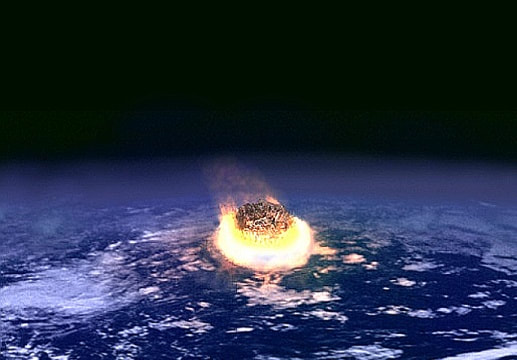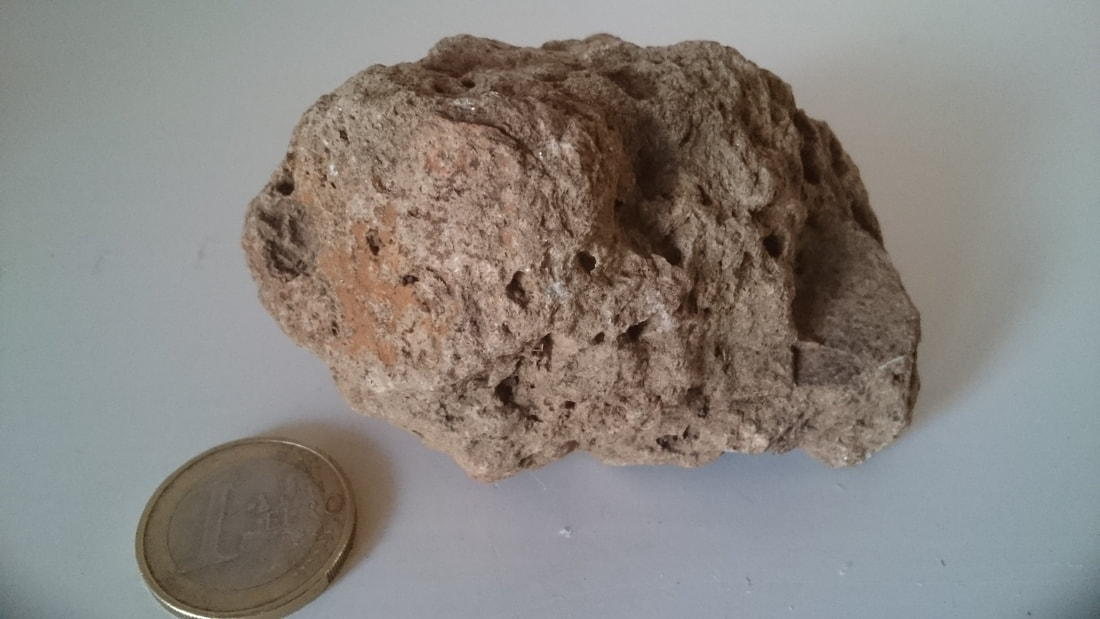What we will consider in this month’s blog is what happens when a much larger object, such as a small asteroid, circa km(s) in dimension, hits the Earth.
A lot has been written and broadcast on the threat of asteroids colliding with the Earth and several Hollywood films have painted scenarios and stories on such events. Much of the popular material is by its nature sensationalist. It is unlikely there will be a major asteroidal impact on Earth within the next 50 years. However, this is not completely certain, and we will look at the potential for such an event to occur. That an asteroid will, if not deflected, hit the Earth in the future is certain and in a future blog we will review current known threats, and when this may be.
Where the impacting object is large enough, greater than about 1km in dimension, frictional burn-up and velocity reduction (from orbital speed) due to the Earth’s atmosphere will not significantly slow the object, and it will hit the Earth’s surface at high velocity.
Depending upon the size of the impactor, this can cause massive destruction to the local area. Shock waves, or tsunamis if the impact is into the ocean, can have huge effects on both the local geology and in wider scope, life on Earth. Potentially huge amounts of dust will be thrown into the atmosphere by the impact. The atmosphere can become opaque to sunlight reaching the surface and thus plant photosynthesis cannot continue. This would result in vegetation loss and consequently loss of species dependent upon plant life. Marine life is also affected as phytoplankton, the lowest of the food chain in the oceans, is critically dependent on light for photosynthesis. This would affect all the food chain; no plankton leads to no larger fish, and of course marine mammals such as whales.
Where the impactor is large enough, species extinctions can occur and have done so. Throughout the geological record, periods of mass extinction* across the whole Earth have been detected. We will look more at these and the correlation to asteroid impact in next month’s blog.
(*) A mass extinction event is defined as the global decrease in diversity of life forms. It does not
happen immediately but occurs geologically abruptly, i.e. over a period of 10**5 to 10**6 years. It is
believed that at least 15 such events have occurred on Earth over the past 550 million years.
The Chicxulub crater and impact are well documented and occurred in close correlation to the geological record for the demise of the dinosaurs. Less well known and documented, and more accessible to European readers and visitors, is the Rochechouart impact in Limousin, France. This event also has a close temporal correlation to a mass species extinction event.
Our book on the Limousin impact provides an investigation into the likely progenitor and details the local and wider-scale effects this impact had. This is a highly recommended read.
(notice the pumice-like air pockets)
The Limousin Asteroid impact of the Triassic Rhaetian age
N Taylor. Observatoire Solaire. 2017. ISBN 978-1-999-904-41-8
Next Month
We will look at mass species extinctions events and their correlation to asteroid and comet impacts. The topic list for future monthly blogs is now included in our blog index (alongside previous monthly topics)



